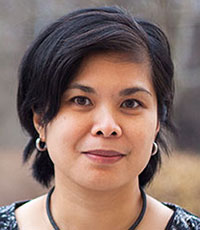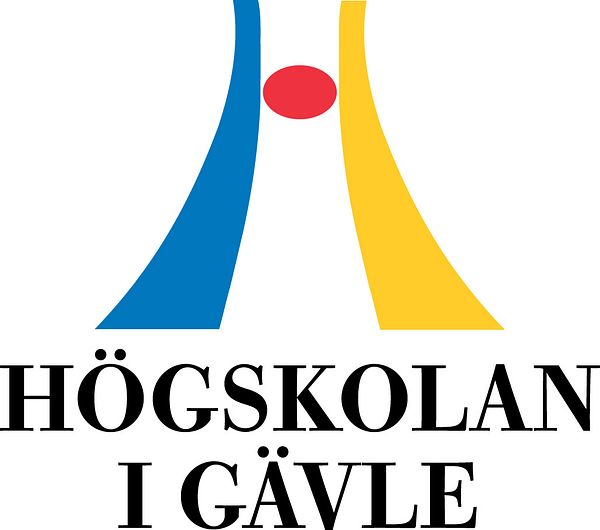Press release -
Flood maps unreliable
“Flood maps supposed to predict spring flooding and flood risks rest on assumptions based on available data, but in calibrating processes, actual outcomes are not used,” says Nancy Joy Lim, environmental researcher at the University of Gävle.

Nancy Joy LIm
Large margins of error
Many people live in cities threatened by floods, Nany Joy Lim says, and, importantly, flood risks have increased due to climate change, as extreme rainfall amounts are becoming increasingly common.
Flood maps in use today show the extent of flood waters based on a 100-year flow period. After comparing these maps with actual outcomes for several years, Nancy was able to determine that margins of error are particularly large regarding wide, flat areas.
“It is very difficult to predict how extensive the flooding will be in such areas, and for this reason our flood maps need updating,” Nancy Joy Lim says.
Coastal housing
Coastal housing is very attractive today, despite flood risks.
“For example, Gävle Strand could be at risk if uncertain or unreliable maps were used in the planning process. Taking climate change into account, we cannot actually be certain how much the water will rise.”
A false sense of safety
A flood map is created on the basis of a theoretical model that builds on other models and available data. The maps are then used in spatial planning to decide whether certain areas are safe to build on. Insurance companies also base their risk assessments on the same flood maps.
While these maps are relied upon today, Nancy claims that they are not quite as reliable as we like to think they are. The reason for this is that they are developed by consultants using different models and different data to calculate the extents of floods.
“I have studied the uncertainty of such flood maps, how they are affected by different data and processes used, and I can see that the results can vary.”
Identify zones that may be unsafe
In Nancy’s view, it would be preferable to avoid using maps with crisp boundaries that distinctly separate areas risking flooding from dry areas. These boundaries need to be combined with zones in which there may be a flood risk. By identifying such uncertain zones, maps become more reliable.
“When using the type of maps that distinctly separates “safe” areas from areas risking flooding, we may be led to believe that this information is correct and absolute in character, but the truth is that in reality, no one knows where line should be drawn since water may flow in different ways.”
Unpleasant surprises ahead
Nancy Joy Lim has seen that in municipal spatial planning such uncertainties and limitations of theoretical models are now noticed, but as yet they are not really taken into account in actual spatial planning. Uncertainties are not welcome in decision-making processes, Nancy suggests, and there is also a lack of knowledge on how to use such information in spatial planning.
“Such an approach may pave the way for unpleasant surprises for municipalities, if so-called safe areas are flooded in the future.”
Business as usual
Nancy would like to see map producers assuming the responsibility for showing and communicating uncertainties and for informing map users of the limitations of such maps.
Today, municipalities may be held responsible for how they use these maps, and be held accountable for errors and limitations built into these maps.
“Right now, it is just business as usual. The maps exist and are in use, and we keep building houses. This means that there will be houses in areas which risk being flooded in the future,” Nancy Joy Lim concludes.
--------------------------------
Nancy Joy Lim defended her doctoral thesis Modelling, mapping and visualisation of flood inundation uncertainties at the University of Gävle on 10 December 2018.
External reviewer: Prof. Matthew Wilson, University of Canterbury, New Zealand
Examining committee:Prof. Lars Nyberg, Karlstad University, Sweden
Dr. Camilla Forsell, Linköping University, Sweden
Dr. Jerker Jarsjö, Stockholm University, Sweden
Prof. Mohammad Bagherbandi, University of Gavle (substitute)
Chair: Jonas Boustedt, Head of Department, University of Gavle
-----------------------------------
For more information, please contact:
Nancy Joy Lim, PhD student in spatial planning at the University of Gävle
Phone: 026-648518, 070-774 06 84
Email: nancyjoy.lim@hig.se
Text: Douglas Öhrbom
Photo flooding: TT
Photo Nancy Joy Lim: Anna Sällberg
Topics
- Law
Categories
- nancy joy lim
- climate change
- hundred-year flood
- spring flood
- extreme weather
- city planning
- urban planning
- flood maps
- research
- sustainable living environment
- university of gävle
Education and Research at a Scenic Campus.
The University of Gävle has approximately 17 000 students, more than 50 study programmes and second-cycle programmes, about 1 000 courses in humanities, social and natural sciences and technology.
Research Profiles
Built Environment and Health-promoting Working Life are the general research profiles of the higher education institution. Important parts included are Spatial Planning with a specialisation in Sustainable Built Environment and Musculoskeletal Disorders with the purpose to prevent work-related injuries. In 2010, the higher education institution received permission to carry out third-cycle programmes in the profile area of Built Environment.
The higher education institution has applied for permission to carry out third-cycle programmes in technology, humanities and social sciences.
